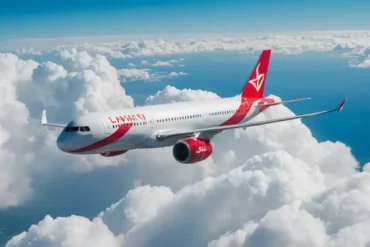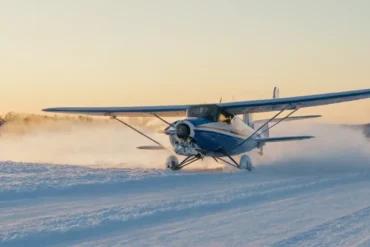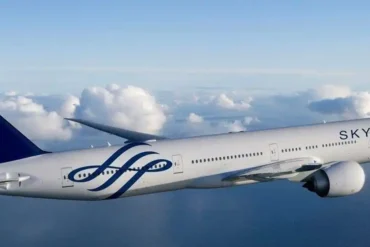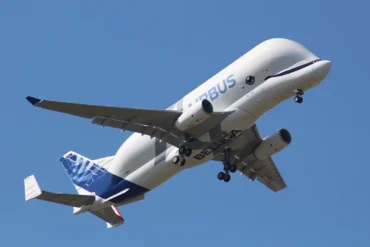Have you ever imagined boarding a plane without a pilot? It’s a concept some people see as the future of commercial aviation, and it can be quite a mind-bending idea.
Let’s take a quick journey through time. Pilotless aircraft, or drones, have been around since World War II, primarily used by the military for keeping an eye on things and even in combat. The US Air Force is currently working on something called the Skyborg initiative, which aims to create AI-driven unmanned combat aircraft to tag along with manned fighters on dangerous missions. In fact, in December 2022, they pulled off something pretty impressive: 12 test flights of an AI-piloted F-16 fighter jet. These flights racked up over 17 hours of autonomous flight time, including mock aerial battles.
Often, what starts in the military finds its way into our everyday lives. Take Airbus UpNext, for example. This branch of the well-known aircraft manufacturer is currently testing out its Dragonfly technology in an Airbus A350-1000. This clever tech uses data from the aircraft’s sensors to map out the terrain, allowing the plane to navigate on its own without human input.
To show how well it works, the system helps pilots during flights, especially in tricky situations. Imagine a scenario where they need to handle an emergency with an incapacitated crew member. The system steps in, creating new flight plans, chatting with Air Traffic Control, and keeping in touch with the airline’s Operations Control Centre. While Airbus is keeping things under wraps, this development suggests they’re working towards having just one pilot (known as single pilot operation or SPO) for commercial aircraft.
SPO: The first step towards pilotless aircraft
Now, let’s consider a situation where the single pilot suddenly faces a medical emergency, like a heart attack or brain aneurysm. In this case, the automated flight system would need to take over, guiding the plane to a safe landing.
Detecting when a pilot is incapacitated isn’t too difficult if the system constantly monitors their vital signs. But here’s the thing: if this system can fly the plane on its own without human input, do we really need the pilot at all? Could we eventually have an AI system that can fly an aircraft independently, with no one in the cockpit?
For airlines, this idea is quite appealing. After all, autonomous systems don’t get sick, tired, or go on strike—and they certainly don’t need to be paid!
However, the challenges of implementing autonomous commercial flights are enormous. Pilots undergo extensive training to handle unexpected emergencies in flight simulators. While AI is advancing rapidly, how would an autonomous system react if, say, a bird strike caused both engines to fail shortly after takeoff? Could it quickly identify a safe landing spot, similar to Captain Chesley Sullenberger’s famous landing of a damaged Airbus A320 on the Hudson River near New York City?
We’ve seen driverless vehicles make mistakes in unexpected situations. Just last month, a driverless Cruise robotaxi in San Francisco collided with a fire truck responding to an emergency call because the robotaxi failed to yield.
It’s important to note that there’s a big difference between a drone or a pilotless combat aircraft and a commercial aircraft without a pilot. The former are controlled from the ground or another aircraft, with an operator overseeing the actions of the pilotless aircraft—essentially acting as a remote pilot. For a commercial aircraft, whether it’s operating with a single pilot or completely pilotless, it needs to function independently without remote control. Otherwise, it could be vulnerable to hacking, hijacking, or being directed towards nearby tall structures.
As former Qantas captain Bill Austen explains, “Allowing remote access to controls akin to a remote pilot (like drones) would undermine the current security protocol of keeping commercial jets isolated from external connections. At present, there is strictly no internet connectivity between the aircraft systems and external sources. While passengers may have internet access, it is through a distinct, isolated system. Even routine electronic system updates for aircraft are carried out using floppy disk technology to shield these systems from potential hacking attempts.”
What are aviation regulators saying?
While pilots and their unions universally oppose the idea of single pilot operations, aviation regulatory bodies, tasked with ensuring the industry’s safety, are looking into it further. The European Union Aviation Safety Agency, working with the Netherlands Aerospace Centre, is conducting a study on single pilot operations. Set to wrap up in August 2024, the study is examining crucial aspects such as pilot workload, instances of pilot error, pilot incapacitation, fatigue, sleep inertia, and breaks for physiological needs.
A previous study by the US Federal Aviation Administration and National Aeronautics and Space Administration compared single pilot operations with two-crew and reduced crew operations. They concluded that “single pilot operations are currently not deemed acceptable due to the substantial task demands and workload.” However, the study also pointed out that advancements in technology leading to autonomous systems with enhanced functionalities, shared responsibilities, and effective human-autonomy collaboration could potentially make single pilot operations feasible in the future.
If single pilot operations do become a reality, it’s unlikely to happen in commercial passenger aircraft right away. As Austen notes, “The more serious discussions about single pilots are mainly focused on freight aircraft. It seems that the occasional loss of a freight pilot is considered more acceptable than the potential tragedy involving multiple passengers.”


















